2017 has been another prominent year for books about entrepreneurship and innovation, reflecting a continued global interest in the startup ecosystem.
Here’s our list of best books on entrepreneurship and innovation, 2017:
The Startup Way: How Modern Companies use Entrepreneurial Management to Transform Culture and Drive Long-Term Growth, by Eric Ries

In The Startup Way, he turns his attention to an entirely new group of organizations: established enterprises like iconic multinationals GE and Toyota, tech titans like Amazon and Facebook, and the next generation of Silicon Valley upstarts like Airbnb and Twilio.
Drawing on his experiences over the past five years working with these organizations, as well as nonprofits, NGOs, and governments, Ries lays out a system of entrepreneurial management that leads organizations of all sizes and from every industry to sustainable growth and long-term impact. Filled with in-the-field stories, insights, and tools, The Startup Way is an essential roadmap for any organization navigating the uncertain waters of the century ahead.
A Dozen Lessons for Entrepreneurs, by Tren Griffin

A Dozen Lessons for Entrepreneurs shows how the insights of leading venture capitalists can teach readers to create a unique approach to building a successful business. Through profiles and interviews of figures such as Bill Gurley of Benchmark Capital, Marc Andreesen and Ben Horowitz of Andreesen Horowitz, and Jenny Lee of GGV Capital, Tren Griffin draws out the fundamental lessons from their ideas and experiences. Entrepreneurs should learn from past successes but also be prepared to break new ground. While there are best practices, there is no single recipe they should follow. By better understanding the views and experiences of a wide range of successful venture capitalists and entrepreneurs, readers can discern which of many possible paths will lead to success.
The Innovation Code: The Creative Power of Constructive Conflict, by Jeff DeGraff and Staney DeGraff
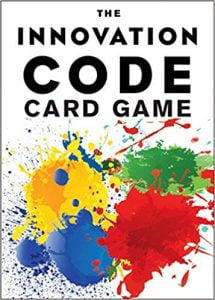
Harmony is sublime in music but deadly to innovation. The only way to create new, hybrid solutions is to clash. Innovation happens when we bring people with contrasting perspectives and complementary areas of expertise together in one room. We innovate best with people who challenge us, not people who agree with us.
It sounds like a recipe for chaos and confusion. But in The Innovation Code, Jeff DeGraff, dubbed the “Dean of Innovation,” and Staney DeGraff introduces a simple framework to explain the ways different kinds of thinkers and leaders can create constructive conflict in any organization. This positive tension produces ingenious solutions that go far beyond “the best of both worlds.”
Drawing on their work with nearly half of the Fortune 500 companies, the DeGraffs help you harness the creative energy that arises from opposing viewpoints. They identify four contrasting styles of innovator—the Artist, the Engineer, the Athlete, and the Sage—and include exercises and assessments for building, managing, and embracing the dynamic discord of a team that contains all four. You can also figure out where you fit on the continuum of innovator archetypes.
Using vivid examples, The Innovation Code offers four steps to normalize conflict and channel it to develop something completely new. By following these simple steps, you will get breakthrough innovations that are both good for you and your customers. This is a rigorous but highly accessible guide for achieving breakthrough solutions by utilizing the full—and seemingly contradictory—spectrum of innovative thinking.
The Inevitable: Understanding the 12 Technological Forces that will Shape our Future, by Kevin Kelly
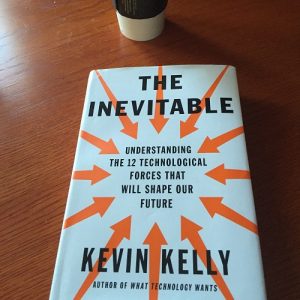
Much of what will happen in the next thirty years is inevitable, driven by technological trends that are already in motion. In this fascinating, provocative new book, Kevin Kelly provides an optimistic roadmap for the future, showing how the coming changes in our lives—from virtual reality in the home to an on-demand economy to artificial intelligence embedded in everything we manufacture—can be understood as the result of a few long-term, accelerating forces. Kelly both describes these deep trends—interacting, signifying, flowing, screening, accessing, sharing, filtering, remixing, tracking, and questioning—and demonstrates how they overlap and are codependent on one another. These larger forces will completely revolutionize the way we buy, work, learn, and communicate with each other. By understanding and embracing them, says Kelly, it will be easier for us to remain on top of the coming wave of changes and to arrange our day-to-day relationships with technology in ways that bring forth maximum benefits. Kelly’s bright, hopeful book will be indispensable to anyone who seeks guidance on where their business, industry, or life is heading—what to invent, where to work, in what to invest, how to better reach customers, and what to begin to put into place—as this new world emerges.
Life 3.0: Being Human in the Age of Artificial Intelligence, by Max Tegmark

How can we grow our prosperity through automation without leaving people lacking income or purpose? What career advice should we give today’s kids? How can we make future AI systems more robust, so that they do what we want without crashing, malfunctioning or getting hacked? Should we fear an arms race in lethal autonomous weapons? Will machines eventually outsmart us at all tasks, replacing humans on the job market and perhaps altogether? Will AI help life flourish like never before or give us more power than we can handle?
What sort of future do you want? This book empowers you to join what may be the most important conversation of our time. It doesn’t shy away from the full range of viewpoints or from the most controversial issues—from superintelligence to meaning, consciousness and the ultimate physical limits on life in the cosmos.
A World of Three Zeros: The New Economics of Zero Poverty, Zero Unemployment, and Zero Net Carbon Emissions, by Muhammad Yunus
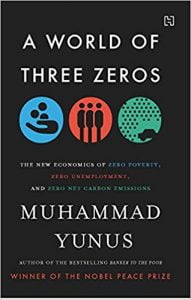
Let the Story do the Work: The Art of Storytelling for Business Success, by Esther Choy

It sounds so simple: Incorporate a story and people will remember your message. But when you get down to crafting one, there’s nothing easy about it.
Material for stories surrounds us. Yet few people are skilled at sharing personal anecdotes and even fewer know how to link them to professional goals. Whether you want to stand out in the interview process, add punch to a presentation, or make a compelling case for a new initiative, Let the Story Do the Work shows you how to mine your experience for simple narratives that convey who you are, what you want to achieve, and why others should care.
Cut the Crap and Jargon: Lessons from the Startup Trenches, by Shradha Sharma and T.N. Hari
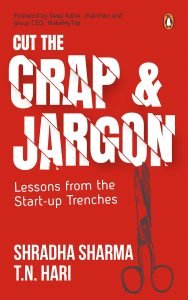
Start-ups are the fountainheads of innovation that power this world. There can be nothing more energizing than speaking to entrepreneurs, listening to their ideas and feeling their passion and energy. An interesting read for a global audience, Cut the Crap and Jargon: Lessons from the Start-up Trenches addresses the curiosity raised by what has been driving the frenzy in the last three years, explores how much of this is for real and, finally, seeks to understand the implications this may have for the cross-border movement of risk capital.
Product Leadership: How Top Product Managers Launch Awesome Products and Build Successful Teams, by Richard Banfield, Martin Eriksson and Nate Walkingshaw
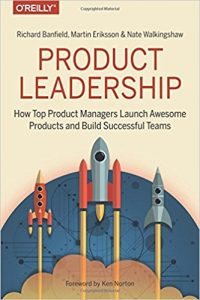
In today’s lightning-fast technology world, good product management is critical to maintaining a competitive advantage. Yet, managing human beings and navigating complex product roadmaps is no easy task, and it’s rare to find a product leader who can steward a digital product from concept to launch without a couple of major hiccups. Why do some product leaders succeed while others don’t?
This insightful book presents interviews with nearly 100 leading product managers from all over the world. Authors Richard Banfield, Martin Eriksson, and Nate Walkingshaw draw on decades of experience in product design and development to capture the approaches, styles, insights, and techniques of successful product managers. If you want to understand what drives good product leaders, this book is an irreplaceable resource.
China’s Mobile Economy, by Winston Ma
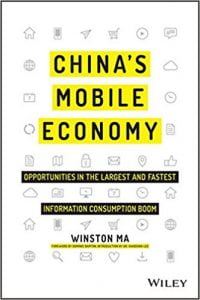
China’s Mobile Economy: Opportunities in the Largest and Fastest Information Consumption Boom is a cutting-edge text that spotlights the digital transformation in China. Organised into three major areas of the digital economy within China, this ground-breaking book explores the surge in e-commerce of consumer goods, the way in which multi-screen and mobile Internet use have increased in popularity, and the cultural emphasis on the mobile Internet as a source of lifestyle- and entertainment-based content. Targeted at the global business community, this lucid and engaging text guides business leaders, investors, investment banking professionals, corporate advisors, and consultants in grasping the challenges and opportunities created by China’s emerging mobile economy, and its debut onto the global stage.
The year 2014-15 marks the most important inflexion point in the history of the internet in China. Almost overnight, the world’s largest digitally-connected middle class went both mobile and multi-screen (smartphone, tablets, laptops and more), with huge implications for how consumers behave and what companies need to do to successfully compete. As next-generation mobile devices and services take off, China’s strength in this arena will transform it from a global “trend follower” to a “trendsetter.”









